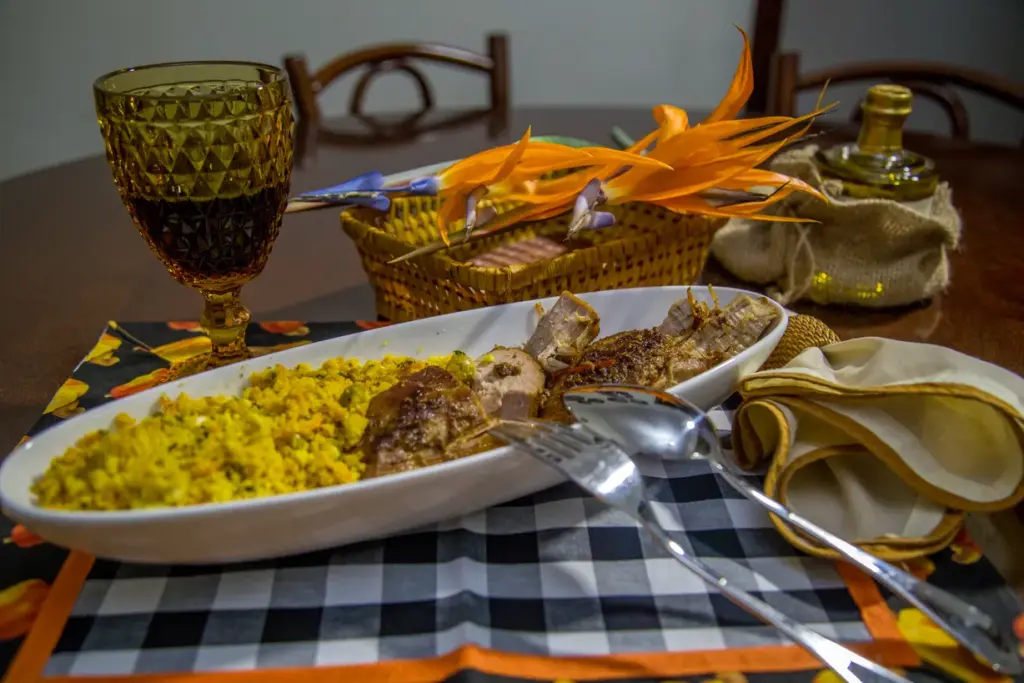Moroccan Cuisine: A Dive into the World of Tagines and Couscous
Morocco, a land of sizzling spices, vibrant colors, and rich history, offers a culinary experience unlike any other. If you have a taste for the exotic and the adventurous, Moroccan cuisine will not disappoint. This article aims to take you on a gastronomical journey through some of Morocco’s most iconic dishes – Tagines and Couscous. By the end, you’ll be itching to pack your bags and embark on a culinary adventure to this beautiful North African country.
The Rich History of Moroccan Cuisine
Moroccan cuisine reflects the country’s diverse cultural heritage. Influences from Berber, Arab, Andalusian, and French cuisines converge to create a unique and tantalizing array of flavors. The use of spices like saffron, cumin, coriander, and cinnamon, along with the freshness of ingredients, ensures that every dish tells a story of its own. Exploring Morocco can mean a feast for the senses in every corner, from bustling souks to tranquil riads.
What Makes a Tagine?
The Tagine, both a dish and the name of the conical clay pot it’s cooked in, is a cornerstone of Moroccan cuisine. Ingredients simmer slowly in the Tagine, allowing the flavors to meld together in perfect harmony. You’ll often find a blend of meat, vegetables, dried fruits, and savory spices combining to create this delectable dish. The best part? You can cook a Tagine over an open flame or in a conventional oven.
One popular variant is the chicken Tagine with preserved lemons and olives. This Tagine balances the tartness of preserved lemons with the saltiness of olives and the richness of the chicken, all cooked to tender perfection. Lamb Tagine with prunes and almonds offers another flavor profile, combining sweet and savory elements for a truly unforgettable meal.
Couscous: More Than Just a Side Dish
Couscous is another iconic dish in Moroccan cuisine, often served as a main course and not just a side. This versatile dish can be prepared with various vegetables, meats, and even fruits. In many Moroccan households, Fridays are Couscous days, where families gather to enjoy a communal meal.
One popular version is “Couscous Tfaya,” which features caramelized onions, raisins, and a sprinkle of cinnamon over steamed Couscous. Another delightful variant is “Couscous Bidaoui,” often made with seven vegetables, including pumpkin, zucchini, and carrots, offering a nutritious and filling meal.
Spices: The Heart of Moroccan Cuisine
No discussion about Moroccan cuisine is complete without talking about spices. Spices bring life and depth to Moroccan dishes. The country’s proximity to the spice routes ensured that Moroccan cuisine benefitted from an array of aromatic spices. Ras el Hanout, a blend of over 20 spices, is a staple in many Moroccan dishes. Saffron, turmeric, and ginger add both color and flavor, while cumin and coriander bring earthiness and warmth.
One can’t ignore the sweet spices like cinnamon and nutmeg, often used in both savory and sweet dishes. These spices not only elevate the flavors but also tell the story of Morocco’s rich history and cultural tapestry.
Experience Moroccan Street Food
Beyond the intricate dishes of Tagines and Couscous, Moroccan street food offers a simpler yet equally delicious array of choices. From savory Msemen (Moroccan pancakes) to grilled brochettes and B’ssara (fava bean soup), Moroccan street food is as vibrant as its more formal counterparts.
Exploring Moroccan street food markets, such as the famous Jemaa el-Fnaa in Marrakech, is a sensory experience you’ll never forget. The sounds, the smells, and the sights all come together to offer an authentic taste of Morocco.
Visit Morocco for a Culinary Adventure
By now, your taste buds might be tantalized, and you may be wondering how you can experience this firsthand. Traveling to Morocco provides an opportunity to dive deep into its rich culinary tradition. From the bustling markets of Fez to the tranquil coastal towns of Essaouira, each region offers unique flavors and culinary techniques.
Not only will you get to feast on these delicious dishes, but you can also participate in cooking classes, market tours, and even harvest fresh ingredients right from the fields. This immersive experience will give you a newfound appreciation for the art of Moroccan cooking.
The Future of Moroccan Cuisine
Moroccan cuisine continues to evolve. Modern chefs are now combining traditional recipes with contemporary techniques to create innovative dishes. Restaurants across the globe, from food trucks to fine dining establishments, are putting their own spin on classic Moroccan fare. By experiencing these contemporary takes, you get to see how versatile and dynamic Moroccan cuisine truly is.
The future holds exciting prospects as Moroccan cuisine becomes more recognized on the global stage. Efforts to preserve traditional recipes while embracing modernity ensure that Moroccan cuisine is here to stay and is ever-evolving.
Conclusion: Time to Pack Your Bags
If you’ve made it this far, you’re likely already searching for flights to Morocco. And who can blame you? The rich, flavorful, and diverse world of Moroccan cuisine is like no other. From the complex spices to the melting pot of cultural influences, Morocco offers a unique culinary journey waiting to be explored. Don’t just read about it – live it. Immerse yourself in the flavors, the history, and the exquisite artistry of Moroccan food. Bon voyage!



